Shunquan Tan
CLUE: Leveraging Low-Rank Adaptation to Capture Latent Uncovered Evidence for Image Forgery Localization
Aug 10, 2025Abstract:The increasing accessibility of image editing tools and generative AI has led to a proliferation of visually convincing forgeries, compromising the authenticity of digital media. In this paper, in addition to leveraging distortions from conventional forgeries, we repurpose the mechanism of a state-of-the-art (SOTA) text-to-image synthesis model by exploiting its internal generative process, turning it into a high-fidelity forgery localization tool. To this end, we propose CLUE (Capture Latent Uncovered Evidence), a framework that employs Low- Rank Adaptation (LoRA) to parameter-efficiently reconfigure Stable Diffusion 3 (SD3) as a forensic feature extractor. Our approach begins with the strategic use of SD3's Rectified Flow (RF) mechanism to inject noise at varying intensities into the latent representation, thereby steering the LoRAtuned denoising process to amplify subtle statistical inconsistencies indicative of a forgery. To complement the latent analysis with high-level semantic context and precise spatial details, our method incorporates contextual features from the image encoder of the Segment Anything Model (SAM), which is parameter-efficiently adapted to better trace the boundaries of forged regions. Extensive evaluations demonstrate CLUE's SOTA generalization performance, significantly outperforming prior methods. Furthermore, CLUE shows superior robustness against common post-processing attacks and Online Social Networks (OSNs). Code is publicly available at https://github.com/SZAISEC/CLUE.
ForensicsSAM: Toward Robust and Unified Image Forgery Detection and Localization Resisting to Adversarial Attack
Aug 10, 2025Abstract:Parameter-efficient fine-tuning (PEFT) has emerged as a popular strategy for adapting large vision foundation models, such as the Segment Anything Model (SAM) and LLaVA, to downstream tasks like image forgery detection and localization (IFDL). However, existing PEFT-based approaches overlook their vulnerability to adversarial attacks. In this paper, we show that highly transferable adversarial images can be crafted solely via the upstream model, without accessing the downstream model or training data, significantly degrading the IFDL performance. To address this, we propose ForensicsSAM, a unified IFDL framework with built-in adversarial robustness. Our design is guided by three key ideas: (1) To compensate for the lack of forgery-relevant knowledge in the frozen image encoder, we inject forgery experts into each transformer block to enhance its ability to capture forgery artifacts. These forgery experts are always activated and shared across any input images. (2) To detect adversarial images, we design an light-weight adversary detector that learns to capture structured, task-specific artifact in RGB domain, enabling reliable discrimination across various attack methods. (3) To resist adversarial attacks, we inject adversary experts into the global attention layers and MLP modules to progressively correct feature shifts induced by adversarial noise. These adversary experts are adaptively activated by the adversary detector, thereby avoiding unnecessary interference with clean images. Extensive experiments across multiple benchmarks demonstrate that ForensicsSAM achieves superior resistance to various adversarial attack methods, while also delivering state-of-the-art performance in image-level forgery detection and pixel-level forgery localization. The resource is available at https://github.com/siriusPRX/ForensicsSAM.
Active Adversarial Noise Suppression for Image Forgery Localization
Jun 15, 2025Abstract:Recent advances in deep learning have significantly propelled the development of image forgery localization. However, existing models remain highly vulnerable to adversarial attacks: imperceptible noise added to forged images can severely mislead these models. In this paper, we address this challenge with an Adversarial Noise Suppression Module (ANSM) that generate a defensive perturbation to suppress the attack effect of adversarial noise. We observe that forgery-relevant features extracted from adversarial and original forged images exhibit distinct distributions. To bridge this gap, we introduce Forgery-relevant Features Alignment (FFA) as a first-stage training strategy, which reduces distributional discrepancies by minimizing the channel-wise Kullback-Leibler divergence between these features. To further refine the defensive perturbation, we design a second-stage training strategy, termed Mask-guided Refinement (MgR), which incorporates a dual-mask constraint. MgR ensures that the perturbation remains effective for both adversarial and original forged images, recovering forgery localization accuracy to their original level. Extensive experiments across various attack algorithms demonstrate that our method significantly restores the forgery localization model's performance on adversarial images. Notably, when ANSM is applied to original forged images, the performance remains nearly unaffected. To our best knowledge, this is the first report of adversarial defense in image forgery localization tasks. We have released the source code and anti-forensics dataset.
Prompt Engineering-assisted Malware Dynamic Analysis Using GPT-4
Dec 13, 2023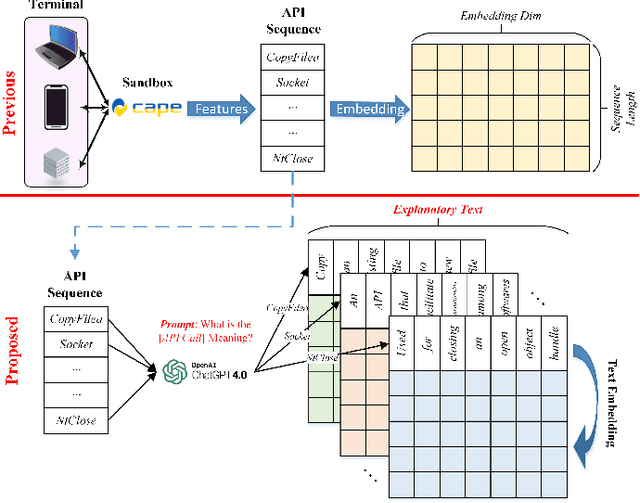

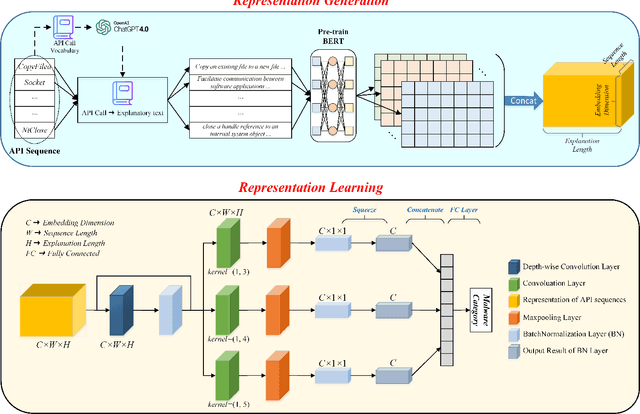
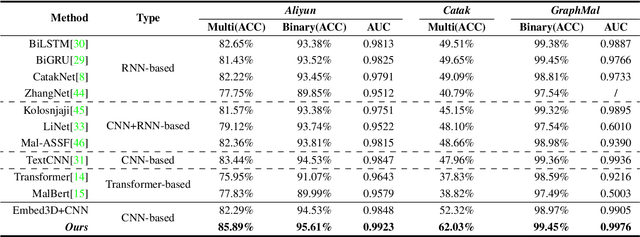
Abstract:Dynamic analysis methods effectively identify shelled, wrapped, or obfuscated malware, thereby preventing them from invading computers. As a significant representation of dynamic malware behavior, the API (Application Programming Interface) sequence, comprised of consecutive API calls, has progressively become the dominant feature of dynamic analysis methods. Though there have been numerous deep learning models for malware detection based on API sequences, the quality of API call representations produced by those models is limited. These models cannot generate representations for unknown API calls, which weakens both the detection performance and the generalization. Further, the concept drift phenomenon of API calls is prominent. To tackle these issues, we introduce a prompt engineering-assisted malware dynamic analysis using GPT-4. In this method, GPT-4 is employed to create explanatory text for each API call within the API sequence. Afterward, the pre-trained language model BERT is used to obtain the representation of the text, from which we derive the representation of the API sequence. Theoretically, this proposed method is capable of generating representations for all API calls, excluding the necessity for dataset training during the generation process. Utilizing the representation, a CNN-based detection model is designed to extract the feature. We adopt five benchmark datasets to validate the performance of the proposed model. The experimental results reveal that the proposed detection algorithm performs better than the state-of-the-art method (TextCNN). Specifically, in cross-database experiments and few-shot learning experiments, the proposed model achieves excellent detection performance and almost a 100% recall rate for malware, verifying its superior generalization performance. The code is available at: github.com/yan-scnu/Prompted_Dynamic_Detection.
Evading Detection Actively: Toward Anti-Forensics against Forgery Localization
Oct 16, 2023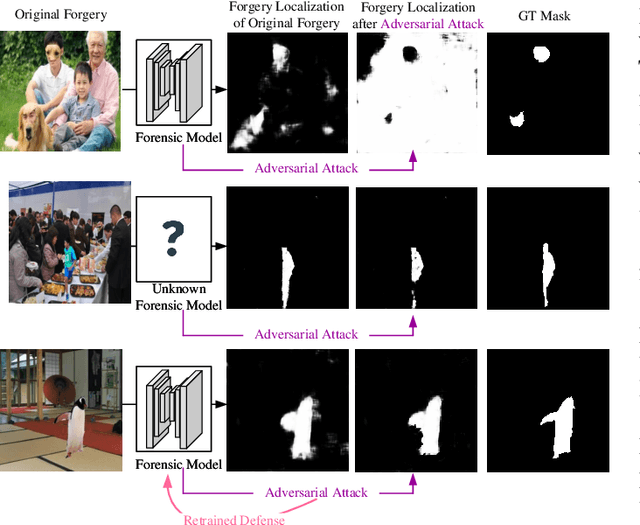
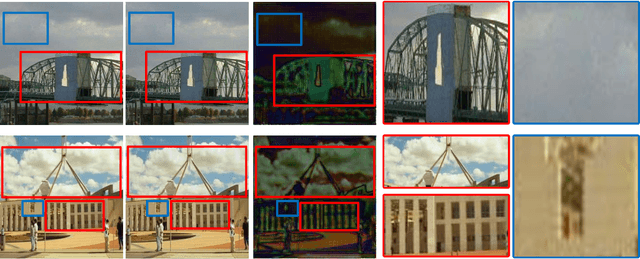
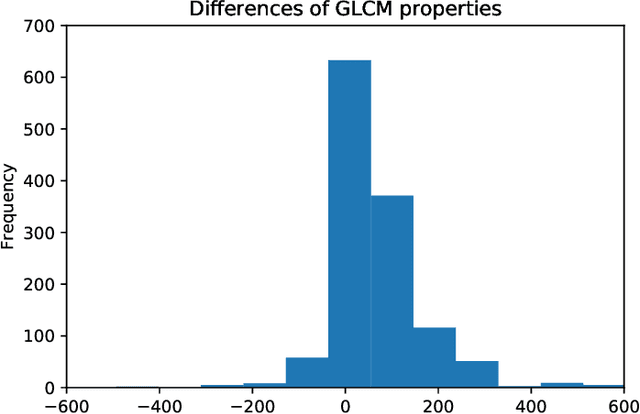
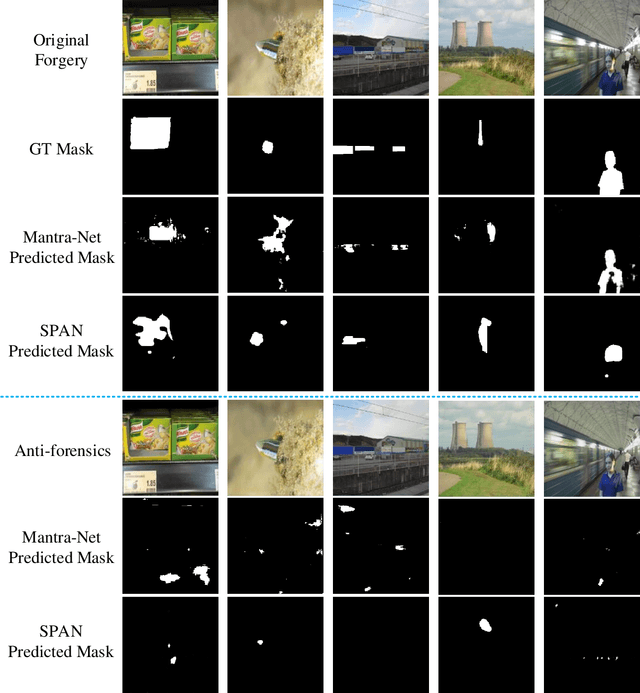
Abstract:Anti-forensics seeks to eliminate or conceal traces of tampering artifacts. Typically, anti-forensic methods are designed to deceive binary detectors and persuade them to misjudge the authenticity of an image. However, to the best of our knowledge, no attempts have been made to deceive forgery detectors at the pixel level and mis-locate forged regions. Traditional adversarial attack methods cannot be directly used against forgery localization due to the following defects: 1) they tend to just naively induce the target forensic models to flip their pixel-level pristine or forged decisions; 2) their anti-forensics performance tends to be severely degraded when faced with the unseen forensic models; 3) they lose validity once the target forensic models are retrained with the anti-forensics images generated by them. To tackle the three defects, we propose SEAR (Self-supErvised Anti-foRensics), a novel self-supervised and adversarial training algorithm that effectively trains deep-learning anti-forensic models against forgery localization. SEAR sets a pretext task to reconstruct perturbation for self-supervised learning. In adversarial training, SEAR employs a forgery localization model as a supervisor to explore tampering features and constructs a deep-learning concealer to erase corresponding traces. We have conducted largescale experiments across diverse datasets. The experimental results demonstrate that, through the combination of self-supervised learning and adversarial learning, SEAR successfully deceives the state-of-the-art forgery localization methods, as well as tackle the three defects regarding traditional adversarial attack methods mentioned above.
STD-NET: Search of Image Steganalytic Deep-learning Architecture via Hierarchical Tensor Decomposition
Jun 12, 2022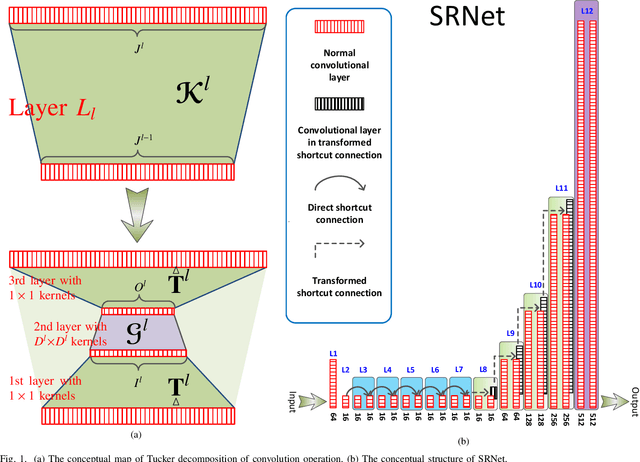
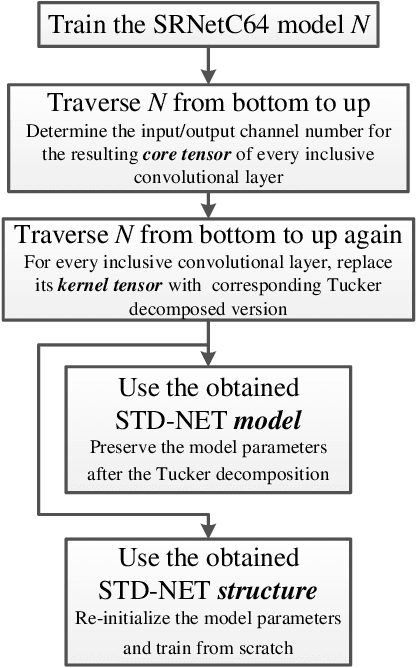
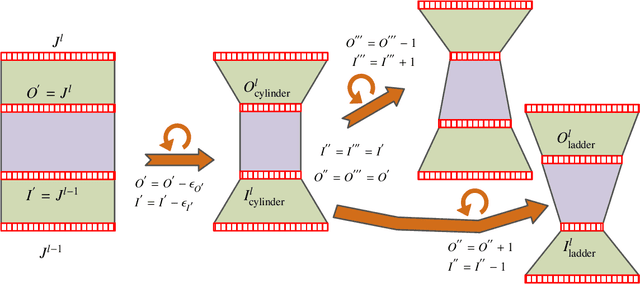
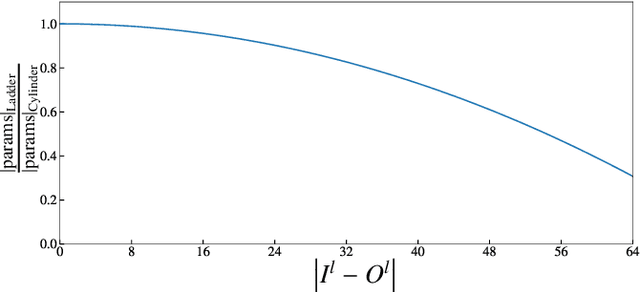
Abstract:Recent studies shows that the majority of existing deep steganalysis models have a large amount of redundancy, which leads to a huge waste of storage and computing resources. The existing model compression method cannot flexibly compress the convolutional layer in residual shortcut block so that a satisfactory shrinking rate cannot be obtained. In this paper, we propose STD-NET, an unsupervised deep-learning architecture search approach via hierarchical tensor decomposition for image steganalysis. Our proposed strategy will not be restricted by various residual connections, since this strategy does not change the number of input and output channels of the convolution block. We propose a normalized distortion threshold to evaluate the sensitivity of each involved convolutional layer of the base model to guide STD-NET to compress target network in an efficient and unsupervised approach, and obtain two network structures of different shapes with low computation cost and similar performance compared with the original one. Extensive experiments have confirmed that, on one hand, our model can achieve comparable or even better detection performance in various steganalytic scenarios due to the great adaptivity of the obtained network architecture. On the other hand, the experimental results also demonstrate that our proposed strategy is more efficient and can remove more redundancy compared with previous steganalytic network compression methods.
Universal Deep Network for Steganalysis of Color Image based on Channel Representation
Nov 24, 2021Abstract:Up to now, most existing steganalytic methods are designed for grayscale images, and they are not suitable for color images that are widely used in current social networks. In this paper, we design a universal color image steganalysis network (called UCNet) in spatial and JPEG domains. The proposed method includes preprocessing, convolutional, and classification modules. To preserve the steganographic artifacts in each color channel, in preprocessing module, we firstly separate the input image into three channels according to the corresponding embedding spaces (i.e. RGB for spatial steganography and YCbCr for JPEG steganography), and then extract the image residuals with 62 fixed high-pass filters, finally concatenate all truncated residuals for subsequent analysis rather than adding them together with normal convolution like existing CNN-based steganalyzers. To accelerate the network convergence and effectively reduce the number of parameters, in convolutional module, we carefully design three types of layers with different shortcut connections and group convolution structures to further learn high-level steganalytic features. In classification module, we employ a global average pooling and fully connected layer for classification. We conduct extensive experiments on ALASKA II to demonstrate that the proposed method can achieve state-of-the-art results compared with the modern CNN-based steganalyzers (e.g., SRNet and J-YeNet) in both spatial and JPEG domains, while keeping relatively few memory requirements and training time. Furthermore, we also provide necessary descriptions and many ablation experiments to verify the rationality of the network design.
Self-Adversarial Training incorporating Forgery Attention for Image Forgery Localization
Jul 06, 2021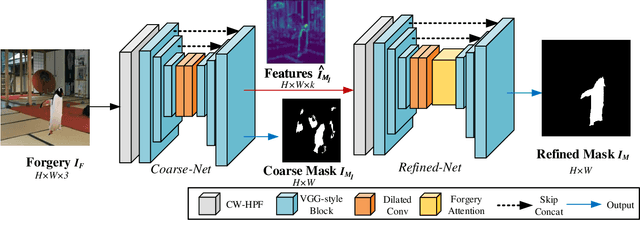
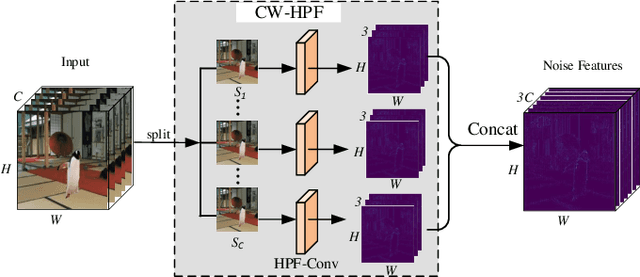
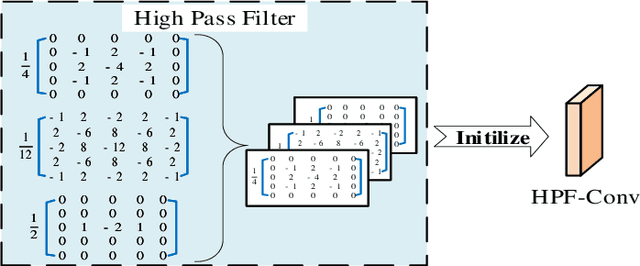
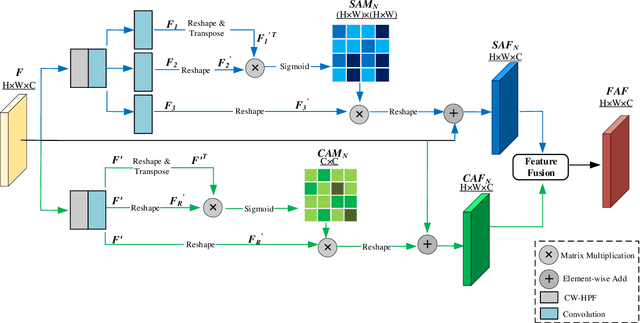
Abstract:Image editing techniques enable people to modify the content of an image without leaving visual traces and thus may cause serious security risks. Hence the detection and localization of these forgeries become quite necessary and challenging. Furthermore, unlike other tasks with extensive data, there is usually a lack of annotated forged images for training due to annotation difficulties. In this paper, we propose a self-adversarial training strategy and a reliable coarse-to-fine network that utilizes a self-attention mechanism to localize forged regions in forgery images. The self-attention module is based on a Channel-Wise High Pass Filter block (CW-HPF). CW-HPF leverages inter-channel relationships of features and extracts noise features by high pass filters. Based on the CW-HPF, a self-attention mechanism, called forgery attention, is proposed to capture rich contextual dependencies of intrinsic inconsistency extracted from tampered regions. Specifically, we append two types of attention modules on top of CW-HPF respectively to model internal interdependencies in spatial dimension and external dependencies among channels. We exploit a coarse-to-fine network to enhance the noise inconsistency between original and tampered regions. More importantly, to address the issue of insufficient training data, we design a self-adversarial training strategy that expands training data dynamically to achieve more robust performance. Specifically, in each training iteration, we perform adversarial attacks against our network to generate adversarial examples and train our model on them. Extensive experimental results demonstrate that our proposed algorithm steadily outperforms state-of-the-art methods by a clear margin in different benchmark datasets.
MCTSteg: A Monte Carlo Tree Search-based Reinforcement Learning Framework for Universal Non-additive Steganography
Mar 25, 2021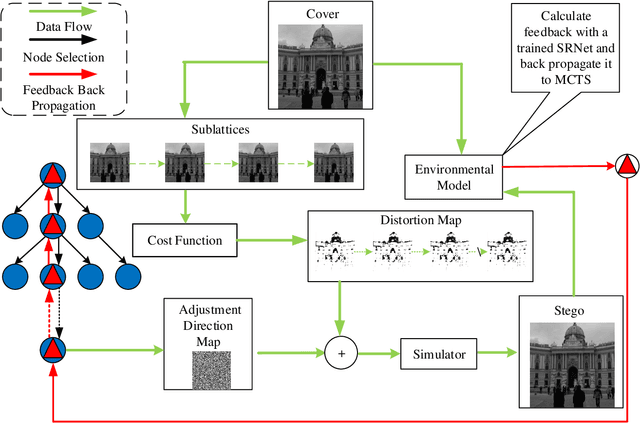
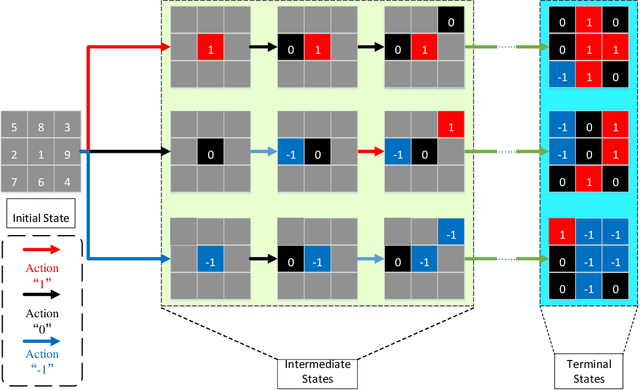
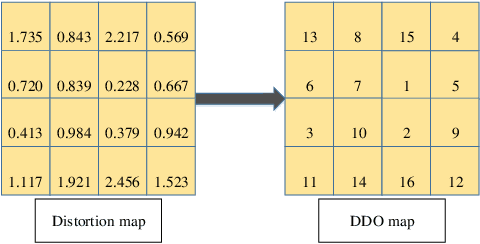
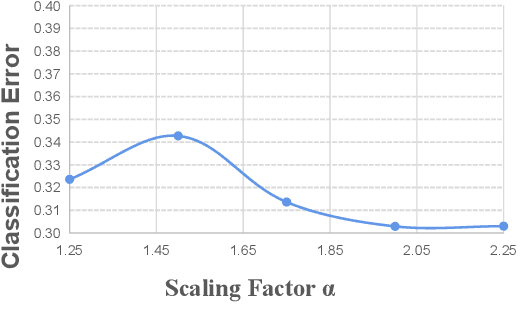
Abstract:Recent research has shown that non-additive image steganographic frameworks effectively improve security performance through adjusting distortion distribution. However, as far as we know, all of the existing non-additive proposals are based on handcrafted policies, and can only be applied to a specific image domain, which heavily prevent non-additive steganography from releasing its full potentiality. In this paper, we propose an automatic non-additive steganographic distortion learning framework called MCTSteg to remove the above restrictions. Guided by the reinforcement learning paradigm, we combine Monte Carlo Tree Search (MCTS) and steganalyzer-based environmental model to build MCTSteg. MCTS makes sequential decisions to adjust distortion distribution without human intervention. Our proposed environmental model is used to obtain feedbacks from each decision. Due to its self-learning characteristic and domain-independent reward function, MCTSteg has become the first reported universal non-additive steganographic framework which can work in both spatial and JPEG domains. Extensive experimental results show that MCTSteg can effectively withstand the detection of both hand-crafted feature-based and deep-learning-based steganalyzers. In both spatial and JPEG domains, the security performance of MCTSteg steadily outperforms the state of the art by a clear margin under different scenarios.
Image Steganography based on Iteratively Adversarial Samples of A Synchronized-directions Sub-image
Jan 13, 2021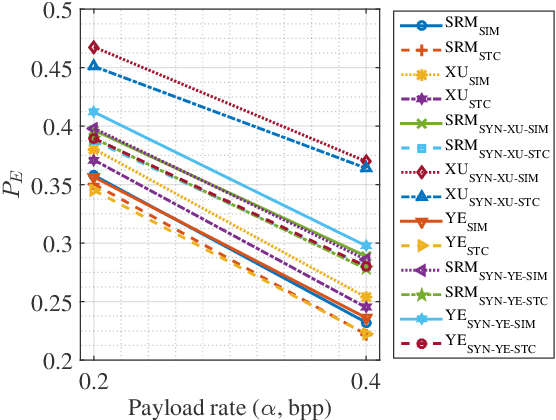
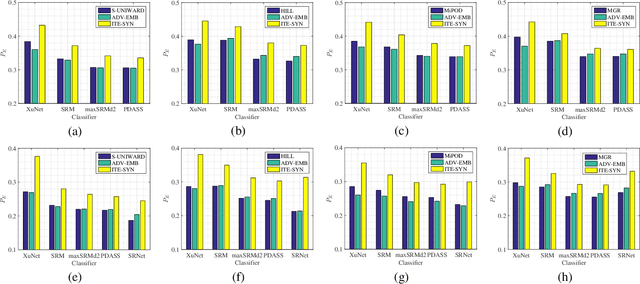
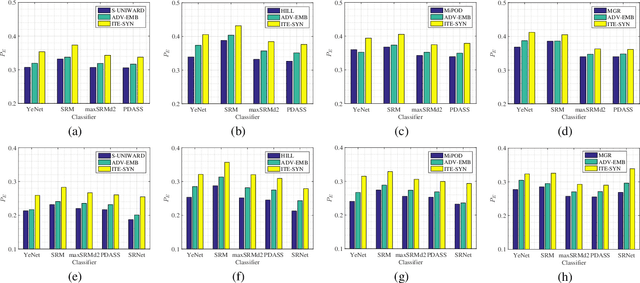
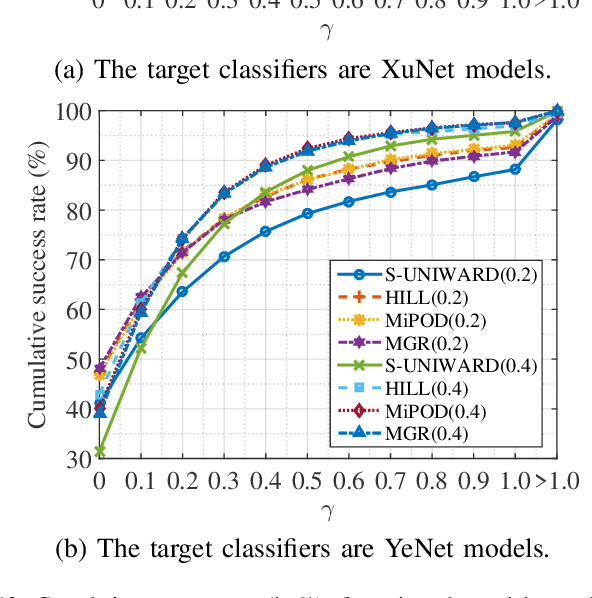
Abstract:Nowadays a steganography has to face challenges of both feature based staganalysis and convolutional neural network (CNN) based steganalysis. In this paper, we present a novel steganography scheme denoted as ITE-SYN (based on ITEratively adversarial perturbations onto a SYNchronized-directions sub-image), by which security data is embedded with synchronizing modification directions to enhance security and then iteratively increased perturbations are added onto a sub-image to reduce loss with cover class label of the target CNN classifier. Firstly an exist steganographic function is employed to compute initial costs. Then the cover image is decomposed into some non-overlapped sub-images. After each sub-image is embedded, costs will be adjusted following clustering modification directions profile. And then the next sub-image will be embedded with adjusted costs until all secret data has been embedded. If the target CNN classifier does not discriminate the stego image as a cover image, based on adjusted costs, we change costs with adversarial manners according to signs of gradients back-propagated from the CNN classifier. And then a sub-image is chosen to be re-embedded with changed costs. Adversarial intensity will be iteratively increased until the adversarial stego image can fool the target CNN classifier. Experiments demonstrate that the proposed method effectively enhances security to counter both conventional feature-based classifiers and CNN classifiers, even other non-target CNN classifiers.
 Add to Chrome
Add to Chrome Add to Firefox
Add to Firefox Add to Edge
Add to Edge